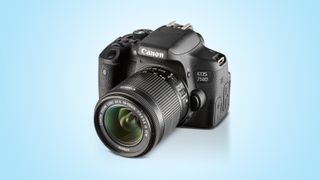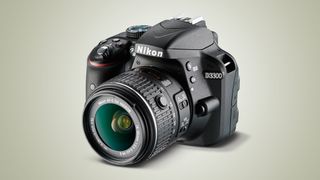What camera should I buy? Here is our step-by-step guide
From simple point-and-shoot compacts to full-frame DSLRs, we explain the differences

Digital SLRs offer big sensors and interchangeable lenses, and they mark the first step into 'serious' photography.
DSLRs are still considered the number one choice for 'serious' photographers, and they make great cameras for students too because they teach all the basic principles of photography without costing a fortune.
A DSLR is fundamentally different to the cameras covered so far because you can swap lenses. This is where digital cameras split into two main types.
So far we've been looking at so-called 'compact' cameras, though it would be more accurate to call them 'fixed lens' cameras, since they're often far from compact! This includes point-and-shoot cameras, action cameras, travel zooms, bridge cameras and high-end compacts.
But the second type is 'interchangeable lens' cameras, which is where you get into DSLR territory (and compact system cameras – more on these shortly).

Being able to change lenses really opens up a whole new world of photography. DSLRs often come with 'standard' zooms, or 'kit' lenses, which cover an everyday range of focal lengths, but you can also get telephotos, super-wide-angle lenses, macro lenses for extreme close-ups, fisheye lenses and fast (wide aperture) prime lenses for atmospheric defocused backgrounds.
DSLRs are perfect for anyone who wants to take their photography more seriously, not just because you can change lenses, but because they have large APS-C sensors that deliver much better quality than the smaller sensors in most compact cameras. You also get full manual controls, the ability to shoot raw files and an optical viewfinder that gives you a bright, clear view of the scene in front of the camera.
Get daily insight, inspiration and deals in your inbox
Sign up for breaking news, reviews, opinion, top tech deals, and more.
Pros: Interchangeable lenses; full manual controls; raw files; APS-C sensor for a big step up in quality.
Cons: Big and bulky compared to most compact cameras; focusing in 'live view' on the rear screen is comparatively sluggish on most models.
Our pick... Nikon D3300

Nikon's D3400 might have replaced it, but the D3300 is still our top pick. Why? Unless you want improved connectivity, then the D3300 is pretty much identical to the D3400 and that bit cheaper. The 24.2MP sensor resolves bags of detail and like much like pricier Nikon DSLRs, it does away with an anti-aliasing filter to maximise image sharpness. This is also a very easy camera to live with. Its clever Guide Mode is a useful learning tool that gives real-time explanations of important features, whilst the collapsible 18-55mm kit lens is great when you're on the go. It's a shame you don't get an articulated touchscreen display or Wi-Fi connectivity, but Nikon does make a cheap plug-in Wi-Fi adaptor if that's a deal-breaker for you.
Read the full review: Nikon D3300
Current page: Step 5: Moving up to a DSLR
Prev Page Step 4: Bigger is better with a bridge camera Next Page Step 6: The mirrorless alternativeMost Popular

